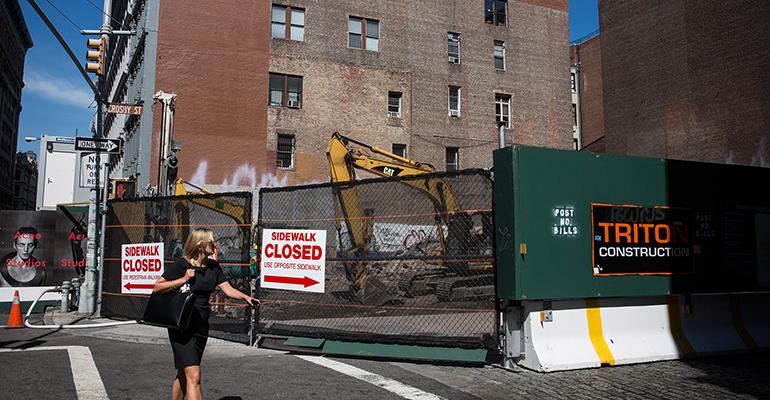Despite the best efforts of apartment developers to build more new units than people need, the apartment market continues to post a solid performance. Part of the reason may be due to construction delays, industry sources note.
“Construction delays have helped the apartment sector’s overall performance to some degree to date in this economic cycle,” says Greg Willett, chief economist with research firm Real Page. “Actual deliveries keep trailing a bit behind expected levels.”
In a normal real estate cycle, developers eventually open too many new apartments and vacancy rates rise sharply. That hasn’t happened yet in this market cycle. So far this year, the average percentage of vacant apartments remains firmly under 5.0 percent. At the same time, new research shows that in the most desirable markets, where developers face high barriers to entry, many planned apartment projects have been delayed.
A surprising number of the apartments that developers planned to build back in 2014 still haven’t begun leasing in 2017, according to analysis by Axiometrics, a Real Page company. In San Francisco, just 43.3 percent of the apartments planned in 2014 had even started construction by 2017. The percentage drops even further to 37.5 percent in New York City and 27.0 percent in Oakland, Calif.
“It takes longer to get properties across the finish line in gateway markets like New York and the Bay Area, which have long been barrier-to-entry zones,” says Willett. “In contrast, almost all the product that was identifiable in the planning stages three years ago has been delivered or is physically under construction in places like Nashville, Charlotte or Dallas.”
The delays mostly happened during the pre-development process, before the developer has won zoning approval from local officials and received construction financing from a bank. The U.S. Census Bureau reports the number of apartment units authorized for construction but not started, and that number hasn't moved meaningfully in recent months.
“Any delay would be happening in the pre-development process, but that has yet to show up in fewer starts,” says Ron Witten, founder of Witten Advisors, an advisory firm that focuses on the apartment sector.
Projects are running into delays in part because the places where developers are most eager to build have rigorous approval processes and a lack of vacant sites. “We’re not building on exurban greenfield locations,” says Real Page’s Willett. “Much of the development is on sites where there’s something already there, often something that involves considerable clean-up.”
In addition, a growing share of the new apartments now under construction are in high-rise or mid-rise properties. “Those types of properties are more complicated to build and take longer to deliver,” says Willett.
Development is also getting more difficult because of how long this cycle has run. “We’ve progressed through all the legacy sites left from the last economic downturn and through a couple of waves of sites created in this cycle,” says Willett.
The delays can postpone rising vacancies in the apartment sector, but not for long. Relatively few of the delayed projects seem to have been cancelled.
“This year, previously delayed product seems to be coming to market all at once, making for a comparatively competitive leasing environment for top-end product, especially in urban core locations,” says Willett.

